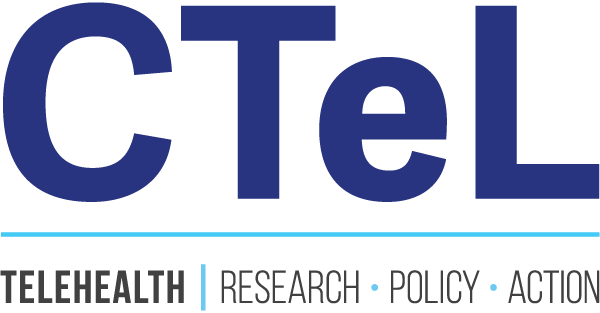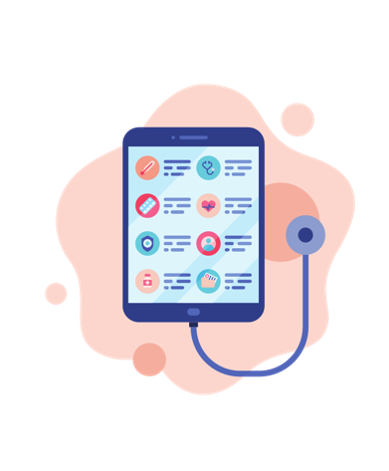
Congressional Hill Day Resources
Three Main Issues for Hill Day:
Using technology to receive healthcare utilizing modalities from a remote location.
REMOTE MONITORING
Tracking and managing your health and symptoms from home with emerging technologies.
ARTIFICIAL INTELLIGENCE
Using AI, robots, large language models, and smart algorithms to help doctors diagnose and treat patients efficiently and safely.
Hill Day Prep Session Recordings
Join us every Wednesday in May at 2:00 PM ET.
Recorded May 7th, First of Four Hill Day Prep Sessions
Recorded May 21, Third of Four Hill Day Prep Sessions
Recorded May 14th, Second of Four Hill Day Prep Sessions
Recorded May 28, Fourth of Four Hill Day Prep Sessions
Hill Day Resources: Leave Behinds
PROBLEM: Short-term extensions of Medicare telehealth waivers originally introduced during the COVID-19 pandemic create uncertainty in long-term care planning for patients who benefit from it.
ASK: Cosponsor the CONNECT for Health Act and encourage a committee markup of the bill.
IMPACT: A better understanding of telehealth’s budgetary impact is necessary for a permanent extension of telehealth flexibilities; long-term stability in Medicare telehealth policies will give practices the confidence they need to make significant investments in innovative digital health policies.
Background: In 2001, Congress sought to enhance access to telehealth services by expanding reimbursement under Medicare. To understand the potential impact on the federal budget, Congress requested a score for telemedicine from the Congressional Budget Office (CBO), the agency responsible for assessing the costs of federal programs. The CBO determined that expanding access to telehealth services would increase Medicare spending by $150 in five years and negatively affect the federal budget, resulting in a high cost estimate for telehealth. Consequently, Congress implemented originating site barriers designed to intentionally suppress utilization and, in turn, control costs. This decision reflected their belief that restricting access to telehealth services would help manage expenses, even as they acknowledged the importance of telemedicine in enhancing healthcare access.
The COVID-19 Public Health Emergency (PHE) necessitated a rapid expansion and use of telehealth services. Recognizing this, then-HHS Secretary Alex Azar utilized the PHE authority to waive the restrictions on telehealth. As a result, all Medicare beneficiaries were able to access telehealth services from their home and more providers could offer telehealth. The COVID-19 PHE expired on May 11th, 2023, along with HHS’ authority to waive these requirements. Recognizing the importance of telehealth and its widespread popularity, Congress has passed legislation providing for multiple short-term extensions of these waivers. The most recent extension was passed on March 14th, 2025, and lasts through September 30th, 2025.
Supporting Evidence
BILL SUMMARY: The CONNECT for Health Act would:
Permanently remove all geographic restrictions on telehealth services and expand originating sites to the location of the patient, including homes;
Permanently allow health centers and rural health clinics to provide telehealth services;
Allow more eligible health care professionals to utilize telehealth services;
Remove unnecessary in-person visit requirement for telemental health services;
Allow for the waiver of telehealth restrictions during public health emergencies; and
Require more published data to learn more about how telehealth is being used, impacts of quality of care, and how it can be improved to support patients and health care providers.
To help with accurately scoring the cost impact of telehealth, the information CBO seeks is the following:
Payment rates: How do providers respond to a change in prices paid for telehealth?
Substitution effects: Have substitution effects changed as COVID-19 has become less disruptive?
Downstream spending: Are effects on downstream spending more or less likely for certain types of telehealth services, and what are the mechanisms underlying those effects?
What are the effects of telehealth coverage for nonmental health services, specifically?
Expanded coverage of telemental health services was made permanent under the Consolidated Appropriations Act, 2021.
However, most available research has looked at changes in spending from expanding coverage of telehealth for both mental and nonmental health services.
Would clinicians, health systems, or third-party telehealth operators respond differently to a permanent expansion of telehealth than to a temporary extension?
How has telehealth affected competition among health systems or other brick-and-mortar providers?
There are three primary concerns holding Congress back from pursuing a long-term extension of telehealth flexibilities: cost, quality, and fraud.
Cost
Since 2020, research has demonstrated that telehealth is increasingly substitutive for care, not additive. This means that patients are largely using telehealth in place of in-person care, which would not result in additional health spending. This is counter to the long-held belief that telehealth is being overutilized by the “worried well” or that patients are using both telehealth and in-person care for the same service.
In 2025 alone, numerous studies have been published evaluating telehealth’s cost impact. These add to a growing body of literature supporting telehealth as not only a cost-effective service modality but potentially even a cost-saving one:
Cost Impact of Telehealth: A National Analysis of COVID-19 Data (2025): Telehealth was associated with a reduction in costs ranging from $445,000 to $33 million for Medicare and $155,000–$181 million for Medicaid.
Telemedicine Adoption and Low-Value Care Use and Spending Among Fee-for-Service Medicare Beneficiaries (2025): In this cohort study, telemedicine adoption was associated with modestly lower use of 7 of 20 examined low-value tests (most point-of-care) and no changes in the use of other low-value tests, despite a small rise in total visits that might offer more testing opportunities. Results suggest possible benefits of telemedicine and mitigate concerns about telemedicine contributing to increased spending.
Telehealth and Outpatient Utilization: Trends in Evaluation and Management Visits Among Medicare Fee-For-Service Beneficiaries, 2019-2024 (2025). Overall outpatient utilization remained stable post-pandemic, and increased telehealth adoption was not associated with a rise in total outpatient E&M visits. These findings suggest that broad telehealth adoption has not led to increased healthcare utilization among Medicare FFS beneficiaries.
Association Between Telehealth Use and Downstream 30-Day Medicare Spending (2025). Telehealth-initiated episodes of care were associated with lower 30-day Medicare spending and reduced utilization of labs and imaging. These findings suggest that telehealth, when used as a substitute for office visits, may reduce overall Medicare spending.
Additional studies also indicate this.
The impact of expanded telehealth availability on primary care utilization (2022). Results suggest telehealth availability is not resulting in additional primary care visits and federal policies should support telehealth use.
Use telehealth as needed: telehealth substitutes in-person primary care and is associates with changes in unplanned events and follow-up visits (2023). Patients and providers treated telehealth and in-person visits as substitutes and used either depending on medical needs and availability. Telehealth did not lead to sooner or more follow-up visits than in-person services.
Urgent and non-emergent telehealth care for seniors: Findings from a multi-site impact study (2023). [W]hen deployed within the confines of a patient's existing primary care and health system provider, telehealth can be an effective alternative to in-person care for urgent and non-emergent needs of seniors without increasing downstream utilization.
Quality
The same standards of care that guide in-person care also guide the practice of telehealth. Properly implemented telehealth systems are capable of providing care that is of a similar level of quality compared to in-person care. Telehealth visits still require the same amount of providers’ time as in-person care and still require the same level of professional skills and knowledge. The convenience and flexibility offered by telehealth can also contribute to increased care quality by reducing no-shows and improving treatment adherence.
Receipt of Telehealth Services, Receipt and Retention of Medications for Opioid Use Disorder, and Medically Treated Overdose Among Medicare Beneficiaries Before and During the COVID-19 Pandemic (2022). In this cohort study including 175 778 beneficiaries, receipt of OUD-related telehealth services during the COVID-19 pandemic was associated with improved MOUD retention and lower odds of medically treated overdose.
Comparison of Quality Performance Measures for Patients Receiving In-Person vs Telemedicine Primary Care in a Large Integrated Health System (2022). Findings suggest that telemedicine exposure in primary care poses a low risk for negatively affecting quality performance, highlighting its potential to suitably augment care capacity.
Comparison of in-person vs. telebehavioral health outcomes from rural populations across America (2022). In our very large pragmatic study comparing behavioral health treatment delivered to a population of patients in rural, underserved communities, we found no clinical or statistical differences in improvements in depression or anxiety symptoms as measured by the PHQ-9 and GAD-7 between patients treated via telehealth or in-person.
Comparisons of Communication in Medical Face-To-Face and Teleconsultations: A Systematic Review and Narrative Synthesis (2024). Quantitative coding studies overwhelmingly suggested that there were few significant differences between modalities.
Telehealth vs In-Person Early Palliative Care for Patients With Advanced Lung Cancer: A Multisite Randomized Clinical Trial (2024). The delivery of early palliative care virtually vs in person demonstrated equivalent effects on quality of life in patients with advanced NSCLC, underscoring the considerable potential for improving access to this evidence-based care model through telehealth delivery.
Fraud
Telehealth is not inherently more prone to fraud compared to in-person care. Robust fraud monitoring and prevention mechanisms can help prevent fraud system-wide, whether it is done in person or via telehealth.
HHS OIG: Medicare Telehealth Services During the First Year of the Pandemic: Program Integrity Risks (2022). This data brief describes providers' billing for telehealth services and identifies ways to safeguard Medicare from fraud, waste, and abuse related to telehealth. This information can help CMS, Congress, and other stakeholders determine what safeguards may be needed as they consider permanent changes to telehealth policies in Medicare.
Lack of evidence for telehealth fraud (2023). This article reviews previous efforts to assess the risk of fraud associated with the delivery of virtual care in America, concluding that there is little evidence for higher levels of fraud and abuse related to the use of telehealth.
PROBLEM: Adoption and proliferation of innovative remote monitoring technologies is limited by arbitrary restrictions on reimbursement for associated services.
ASK: Cosponsor the Rural Patient Monitoring (RPM) Access Act (S. 1535 and H.R. 3108)
IMPACT: This would ensure that Medicare reimburses for a greater range of remote monitoring services, allowing for greater adoption of technologies that can improve health outcomes.
BACKGROUND:
Remote monitoring is a broad term that cover two key categories of services:
Remote Physiological Monitoring (RPM), which monitors a patient’s physiological state for chronic conditions, including mental and behavioral health.
Remote Therapeutic Monitoring (RTM), which monitors a patient’s response to treatment for chronic conditions, including mental and behavioral health.
Medicare patients living in rural areas face higher rates of heart failure, hypertension, and diabetes compared to patients in urban areas, and they have limited access to health care. Medicare patients living in rural areas have limited access to healthcare because of roadblocks like a lack of transportation. Remote monitoring can help address this barrier to access. However, Medicare reimbursement for remote physiologic monitoring is lowest in the rural areas where it is needed most. The current lack of adequate Medicare reimbursement leads to the non-implementation of RPM programs in rural areas, reducing access to cost-saving and patient-centered care.
CTeL recently sent a letter to the House Ways & Means Committee highlighting the benefits of remote monitoring in post-acute care. CTeL has also urged 119th Congressional leaders to prioritize remote monitoring reimbursement reform in our priorities letter.
BILL SUMMARY: The RPM Access Act would set the floor for practice expense and malpractice geographic indices for remote physiologic monitoring services at 1.00, allowing rural areas to be able to provide RPM services at the national average. The legislation would also create new requirements to ensure high-quality services for Medicare. These requirements include:
RPM providers must be capable of responding to data anomalies detected by the monitoring service.
RPM providers must be capable of promptly transmitting captured vitals and treatment management notes to the electronic health record of the supervising provider.
CMS may require providers of RPM to report data to the Secretary of HHS in order to facilitate the evaluation of cost savings generated to the Medicare program through the proliferation of remote physiologic monitoring services.
This legislation is supported by National Rural Health Association, American Association of Nurse Practitioners, HIMSS, American Telemedicine Association, Alliance for Connected Care, Ascension, LifePoint Health, Marshfield Clinic, SSM Health, the University of Virginia Center for Telehealth, and the Bipartisan Policy Center.
Supporting Evidence
Cost
Cost-effectiveness of Pulmonary Rehabilitation Among US Adults With Chronic Obstructive Pulmonary Disease (2022). Pulmonary rehabilitation remote monitoring program resulted in net cost savings per patient of $5721.
Quality
Association of Remote Patient Monitoring with Mortality and Healthcare Utilization in Hypertensive Patients: a Medicare Claims–Based Study (2023). RPM use was associated with substantial reductions in hazards of mortality and hospitalization outcomes with an increase in cardiovascular-related outpatient visits.
Telemedicine use and decrements to type 2 diabetes and hypertension care during the COVID-19 pandemic (2024). Telemedicine use was associated with lower odds of HbA1c monitoring for adults with type 2 diabetes and lower odds of BP testing for adults with type 2 diabetes and/or hypertension.
Fraud
Additional Oversight of Remote Patient Monitoring in Medicare Is Needed (2024). Given the growing role of remote monitoring in healthcare, the HHS OIG is improving its oversight of remote monitoring billing and ensuring that the program does not facilitate fraudulent billing.
PROBLEM: Adoption of AI-enabled technologies in the healthcare setting is limited by a lack of clarity on payment opportunities and pathways.
ASK: Cosponsor S. 1399 - Health Tech Investment Act.
IMPACT: This bill would make it easier for hospitals and health systems to incorporate innovative technologies by providing payment pathways.
BACKGROUND: The use of AI in healthcare is quickly becoming the standard of care, with practitioners using algorithm-based healthcare services (ABHS) to detect and diagnose diseases sooner and advance better patient outcomes. The FDA has over 600 AI-enabled medical devices, but the Centers for Medicare & Medicaid Services (CMS) lacks standard or consistent methods for covering and paying for these products. This inconsistency will, in the long run, impact adoption and patient access to medically appropriate AI technologies across the country.
BILL SUMMARY: The Health Tech Investment Act will assign all U.S. Food and Drug Administration (FDA) approved AI-enabled medical devices to a New Technology Ambulatory Payment Classification (APC) in the Hospital Outpatient Prospective Payment System (OPPS) a minimum of 5 years so that adequate data regarding delivery and service costs is acquired before assignment of a permanent payment code.
Specifically, the Health Tech Investment Act would:
Develop a formalized payment pathway for Algorithm-Based Health Services (ABHS) FDA-cleared medical devices
Provide patients with access to innovative, AI-enabled clinical technology
Provide manufacturers and providers with the certainty they need to invest in developing next-generation healthcare technologies and bringing them to market.
Improve patient outcomes, providing resources for providers to meet ABHS standards of care
This legislation is endorsed by AdvaMed, Alliance for Aging Research, Brem Foundation to Defeat Breast Cancer, Focused Ultrasound Foundation, National Health Council, National Psoriasis Foundation, Patients Rising and Right Scan Right Time.
Supporting Evidence
Small, rural hospitals and clinics are at a disadvantage when it comes to the adoption of AI. A 2024 survey found that while 24% of large local health departments are actively using AI or planning to adopt it within the next year, only 5% of small and 7% of medium-sized departments report the same. A 2025 study found that only 8% of Critical Access Hospitals and Rural Community Hospitals were implementing AI-driven analytics.
Cost is a major barrier to AI adoption. This not only includes the direct licensing costs of the technology itself, but also indirect costs, including:
Enhanced cybersecurity needs,
Upgrading health IT infrastructure,
Integrating AI with existing health IT infrastructure,
Increased regulatory and legal compliance needs,
Acquiring and training AI-knowledgeable staff, and
Ongoing monitoring and maintenance.
Subscribe to the Telehealth Scoop!
Get the latest telehealth policy news you need to know, right to your inbox. Stay up-to-date on all the latest CTeL happenings, events, actions, and more!










